As fears rise that mutations could hamper efforts to create an effective coronavirus vaccine, Denmark prepared to cull millions of minks. But many won't be killed — until they're ready for a scarf or hat.
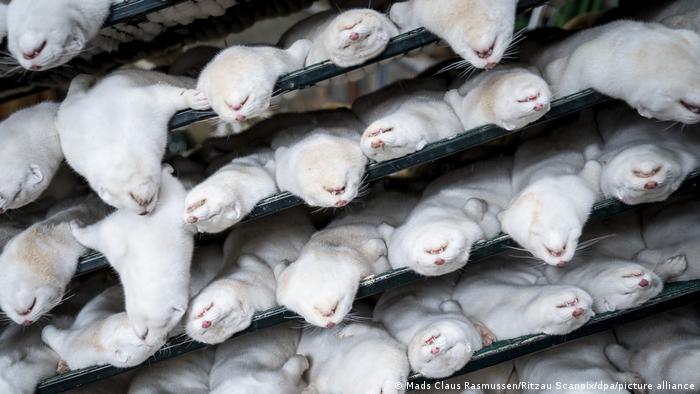
Denmark decided to cull millions of minks last week after a mutated form of the coronavirus was found in humans, leading to a fear that the animals could jeopardize the effectiveness of a vaccine.
What seemed most surprising and shocking when the culling announcement was made was that there were 17 million minks in Denmark, a country in which the human population is about 5.8 million.
Read more: UK bars travelers from Denmark over coronavirus mink outbreak
The legal validity of the order to cull minks on farms across the country was called into question, according to state broadcaster TV2, and the government admitted that it did not have the legal authority to make the order. However, the government did say it still recommends farms kill their animals to stop the spread of a mutated coronavirus.
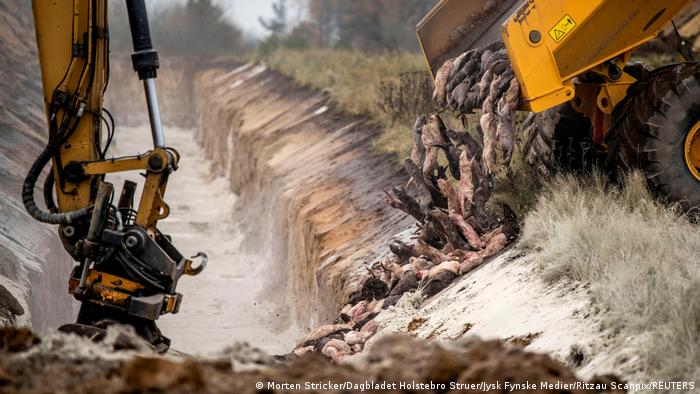
Denmark stopped a complete cull of minks, but still recommended farms kill the animals
The Danish health authorities estimate that at least 200 people have contracted strains of a coronavirus mutation originally found in minks since June. The mutation has also been detected in the Netherlands and Spain, where minks on 40 farms were culled over the summer.
Images of dead minks piling up have provoked outrage on social media. Many people were apparently shocked that there were still people who bought fur.
Rabbit hoods and furry hat bobbles
Each year over 95 million mink, foxes, raccoons, rabbits and other animals are bred and slaughtered for their fur, which ends up as collars, hoods or bobbles, according to the Vienna-based animal welfare organization Four Paws International.
The International Fur Federation estimated the fur trade was worth over $15 billion (€12.7 billion) in 2012, with EU countries accounting for $4.5 billion.
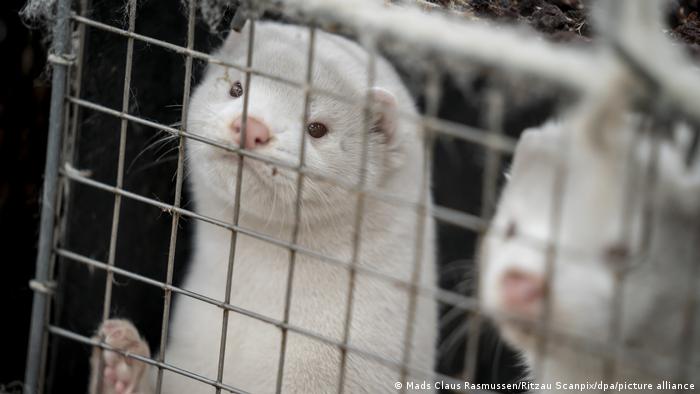
Minks are often kept in cages the size of a shoebox
Europe is the biggest global exporter of fur, though the trade in the fur of seals, dogs and cats is banned. Scandinavian countries, particularly Finland and Denmark, still breed large numbers of animals for their fur, which makes up such a major component of their economies that it has not been possible to introduce a blanket ban across the EU.
"There has to be an end to breeding animals for their fur, in Europe and all over the world," said Henriette Mackensen from the German Animal Welfare Federation. "Minks are crammed into cages and cannot move. They vegetate and develop behavioral problems that lead to self-mutilation and cannibalism."
The animal rights organization PETA said there are also ecological reasons to ban fur farming.
"Farming animals is generally among the largest climate killers of our time," PETA said. "From the production of animal feed to the nitrate-laden excrement from animals on fur farms."
Since a blanket ban is not yet possible, various European states have passed domestic laws to protect animals. Austria, Britain, Croatia, Slovenia, Bosnia and Herzegovina, Serbia and Macedonia have banned fur farms, while France has announced that it will. Germany and Switzerland introduced regulations that make the breeding of mink, fox and raccoon unprofitable. Germany's last mink farm closed in 2019. In the wake of the coronavirus pandemic, the Netherlands has also announced that it will shut all mink farms by March 2021.
Majority of Germans oppose sale of real fur
In October, Four Paws conducted a survey of the German population's attitudes toward the use of real fur in fashion. Of 1,000 respondents, 84% said they were against it and 76% said selling real fur was an outdated practice.
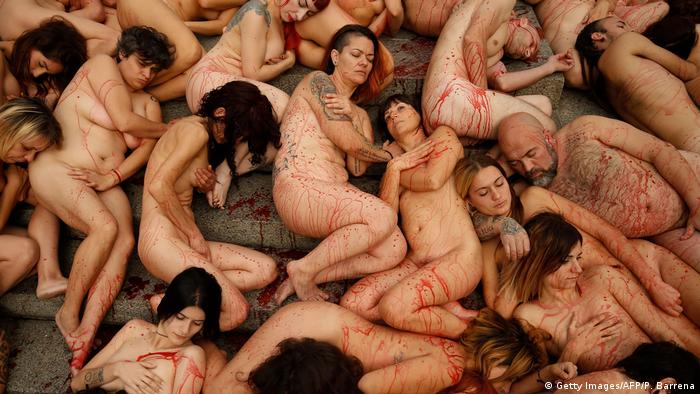
Animal rights groups regularly hold protests against the fur trade
In central Europe, fur coats are no longer a status symbol. Animal welfare organizations have succeeded in raising awareness about the conditions animals are subjected to.
But in many places fur is still in fashion. People continue to wear coats with collars or hats with bobbles made of real fur. Consumers don't always know that the fur is real. If a fur item is cheap, many will assume that it is not real. They do not realize that real fur is not as expensive as it used to be, especially if it is from raccoons.
Most raccoon fur is produced in China in particularly inhumane conditions. There are no nationwide laws in the Asian state prohibiting the maltreatment of animals and no binding regulations stipulating how animals should be farmed humanely.
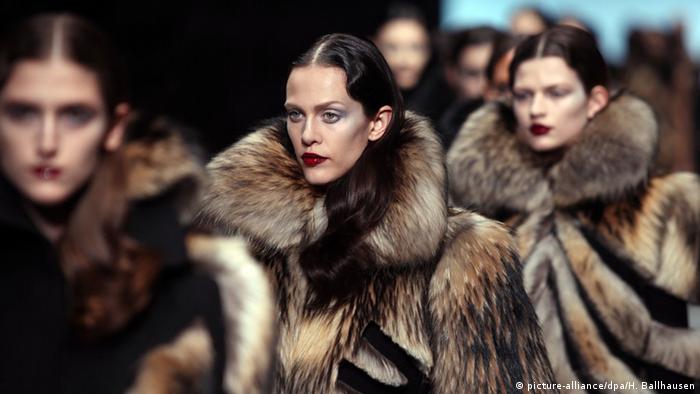
Fur jackets are no longer as popular as fur accessories
According to the International Fur Federation, demand for fur is growing in China, South Korea, Ukraine and many parts of South America.
A changing market
Supporters of the fur industry praise fur's longevity.
"Fur is durable and naturally biodegradable, unlike the synthetic materials it is often compared to," Juozas Olekas, a Lithuanian member of European Parliament and chair of the Sustainable Fur Forum.
Animal rights groups, however, counter that fur's long life comes from the use of chemicals and that a growing trend for fur scarves, collars, hat bobbles and other accessories — rather than fur coats passed from generation to generation — mean the fur itself has little impact on how long the clothing can be worn.
This article was adapted from German.
Watch video 03:12
https://www.dw.com/en/amid-danish-mink-cull-fur-remains-in-fashion/a-55570667
Denmark to eliminate entire farmed mink population
No comments:
Post a Comment